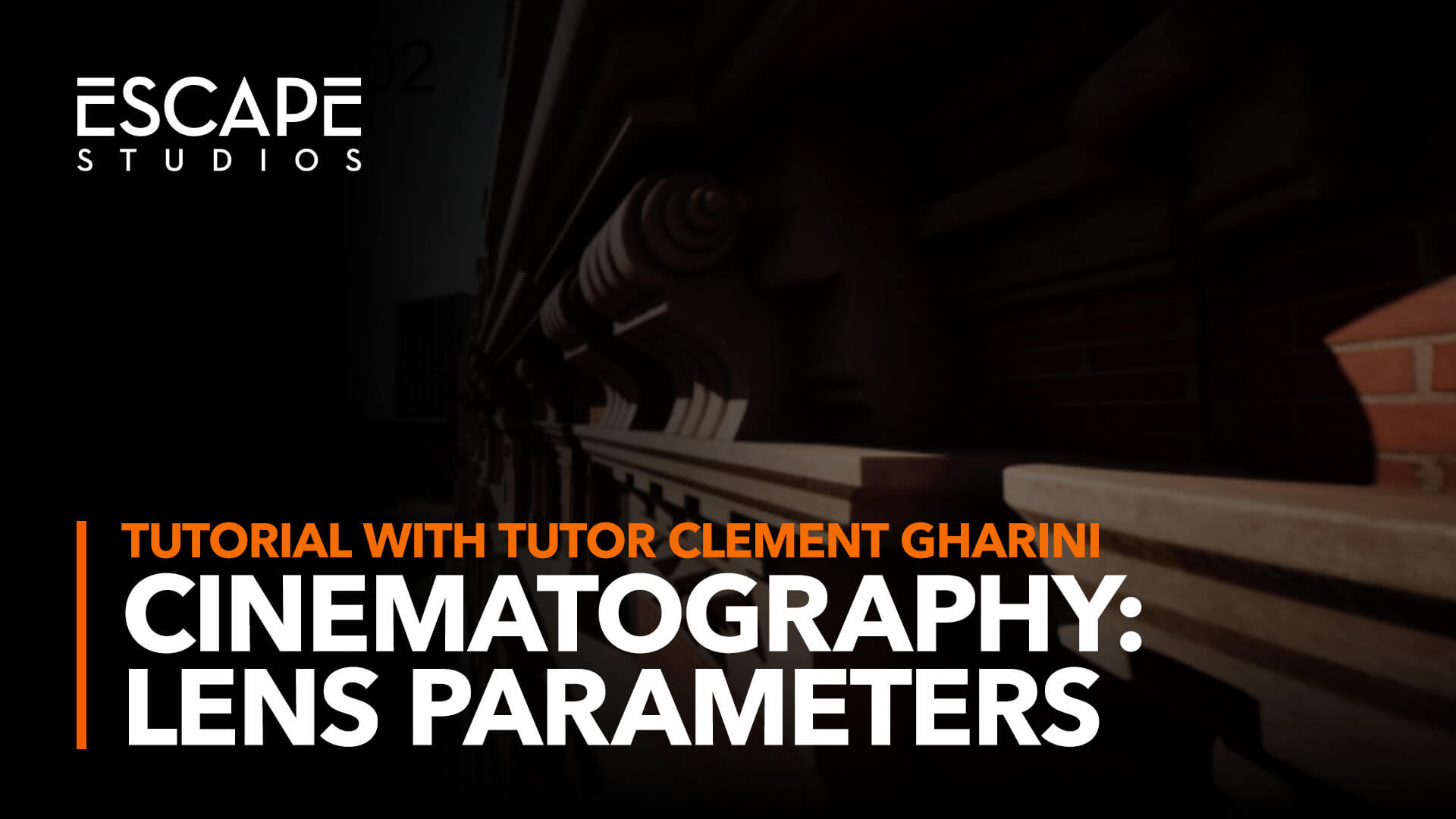news • 26 April 2024
Cinematography: Lens Parameters
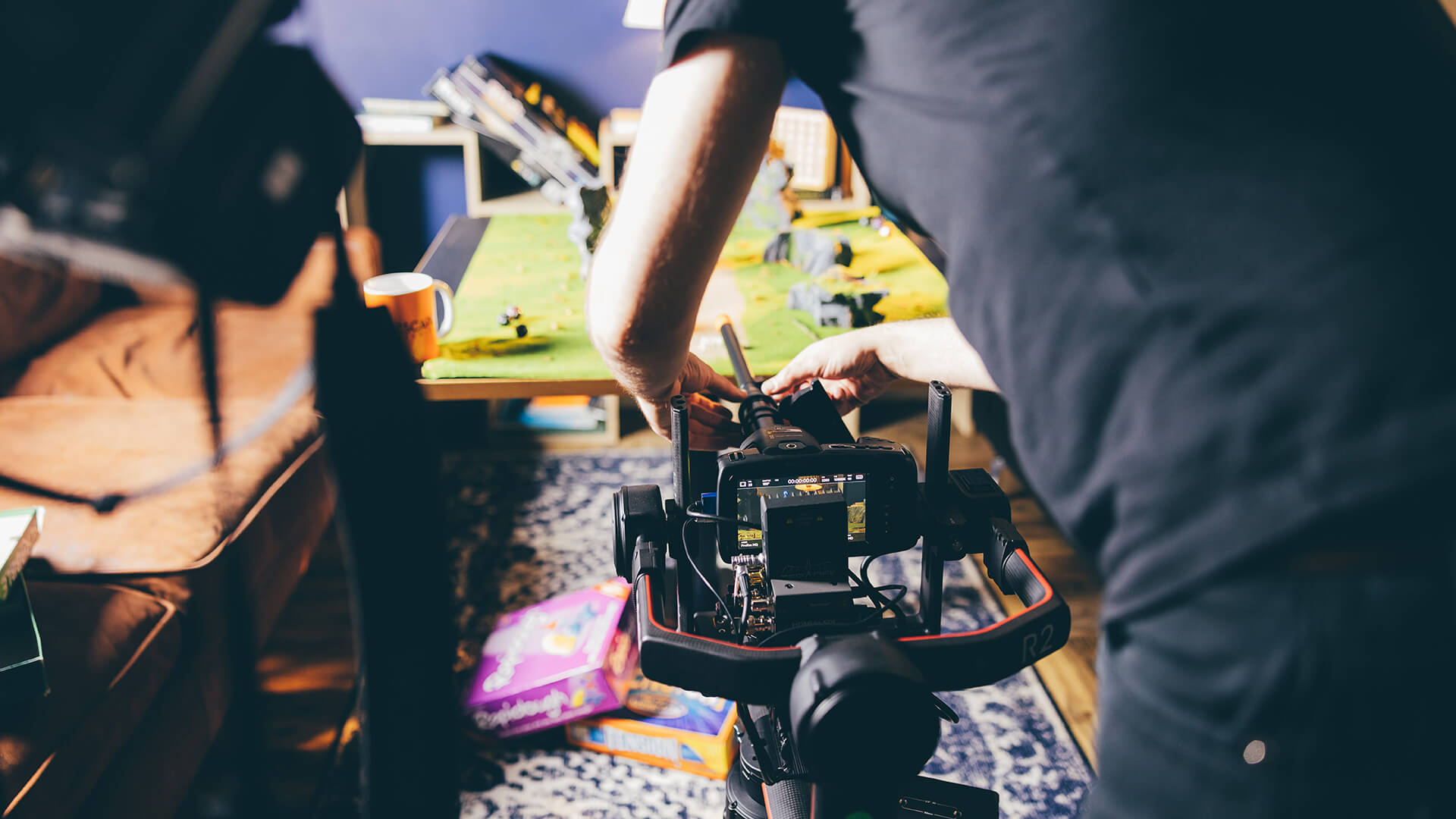

Written by CLEMENT GHARINI
Head of VFX
Introducing the second episode of our Cinematography Series for Digital Artists. This time, we will focus our attention on Lens Parameters.
Cinematography is Everything
In the first video of the series, we established what Cinematography is and why it is such an essential skill for everyone working in animation, games and visual effects.
In order to bring our virtual worlds and creations to life, we must look beyond our digital skills. We need to master light and we need to understand how cameras capture our 3D scenes. Without light, there is simply nothing to see. And without cameras, there is no image.
The Parameters
In this schematic representation of the camera, the parameters are represented in blue and yellow, respectively related to light and composition. As for the elements in orange, those are not parameters but visual by-products.
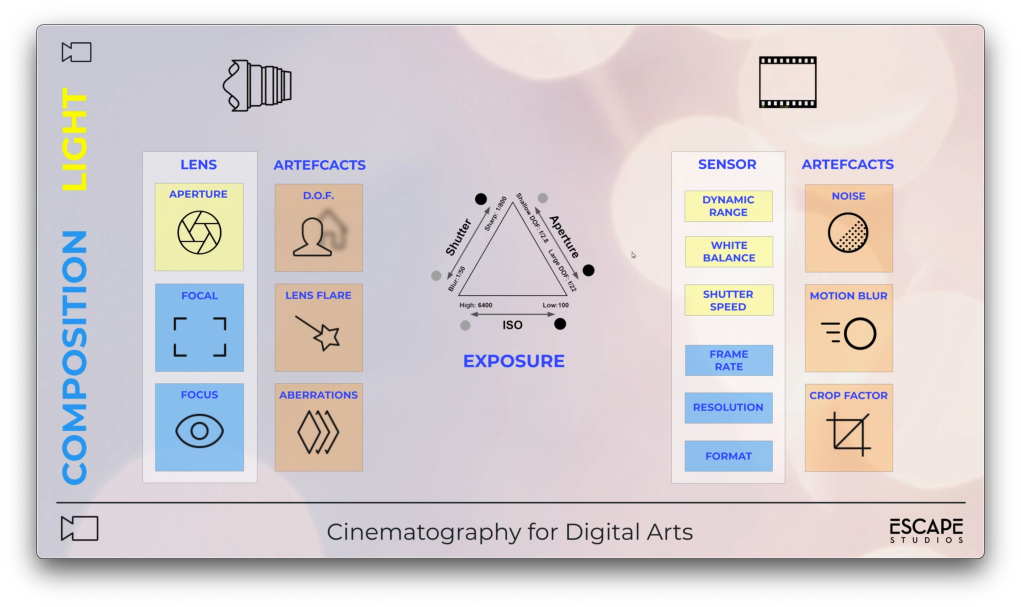
• Focus (or Focal Point)
• Focal (or Focal Length)
• Aperture
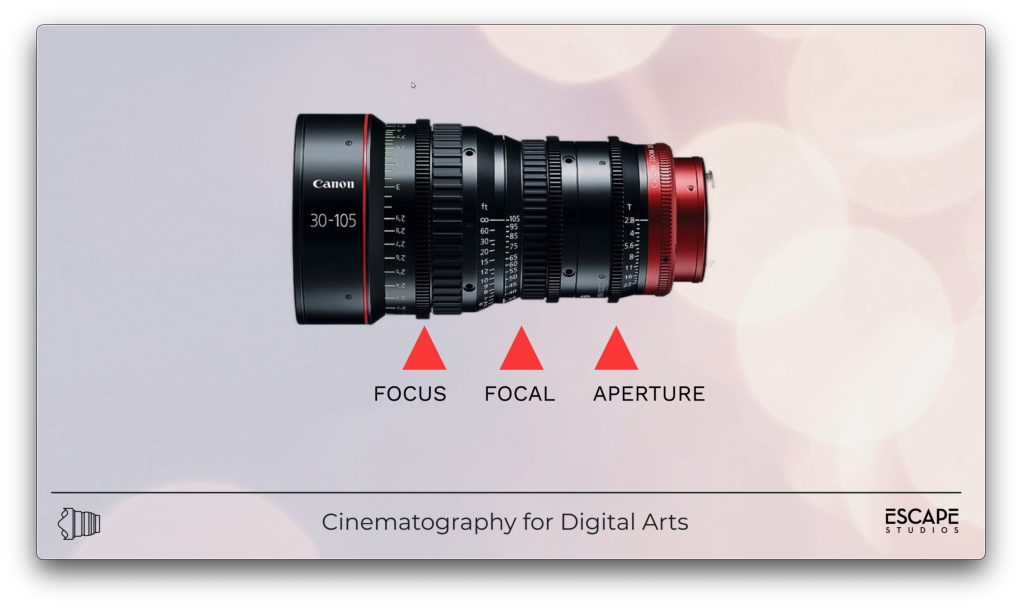
Aperture
The Aperture is a series of blades inside the lens. It’s originally designed to control the amount of light which reaches the sensor, just like the iris in our eyes. The wider the aperture, the higher the exposure, and vice versa. Aperture is expressed in ‘stops’ and the difference between two stops is twice the amount of light.
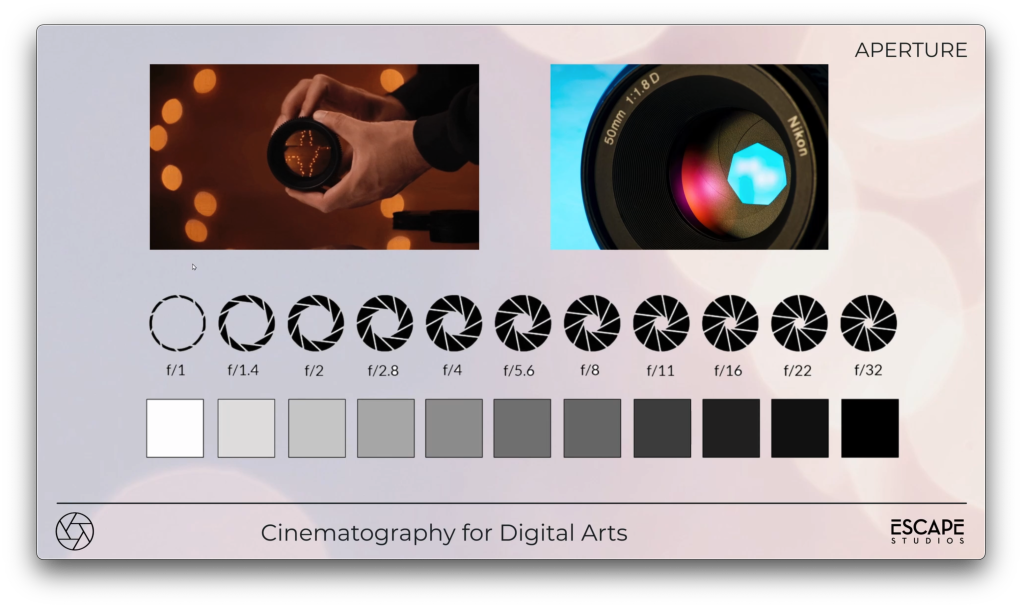
The Focal Length determines 2 distinct factors:
• Field of View
It is the angle ‘seen’ by the camera.
The lower the value of the focal length, the wider the angle.
• Optical Compression
Defines the perceived compression of the scenes' depth, or the perceived distance between objects. A higher focal length will optically compress the depth of the scene. A wide focal length will make objects look further apart than they actually are. A neutral, or standard focal length will provide a perception similar to that of the naked eye.
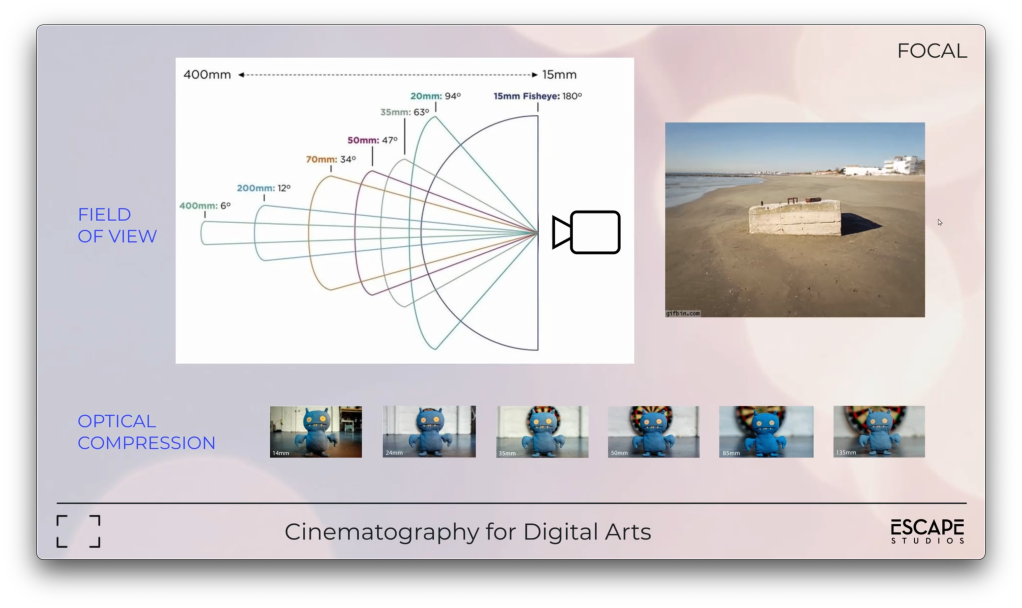
The Focal Point, or Focus, is simply the distance between the sharpest point of your image and the camera. It’s expressed in meters or feet.
Depth of Field
These three parameters combined will affect the Depth of Field.
The Depth of Field is not a parameter created by design. It is a visual artefact. It is the visual consequence of Focal Length, Focal Point and Aperture, interacting together.
The Depth of Field is the resulting area of sharpness around the Focal Point.
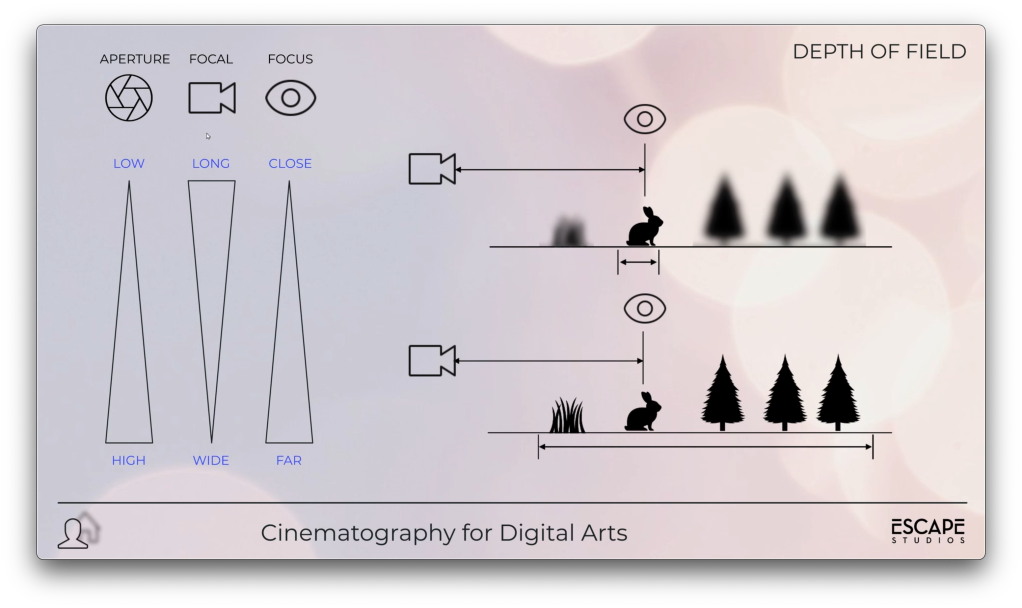
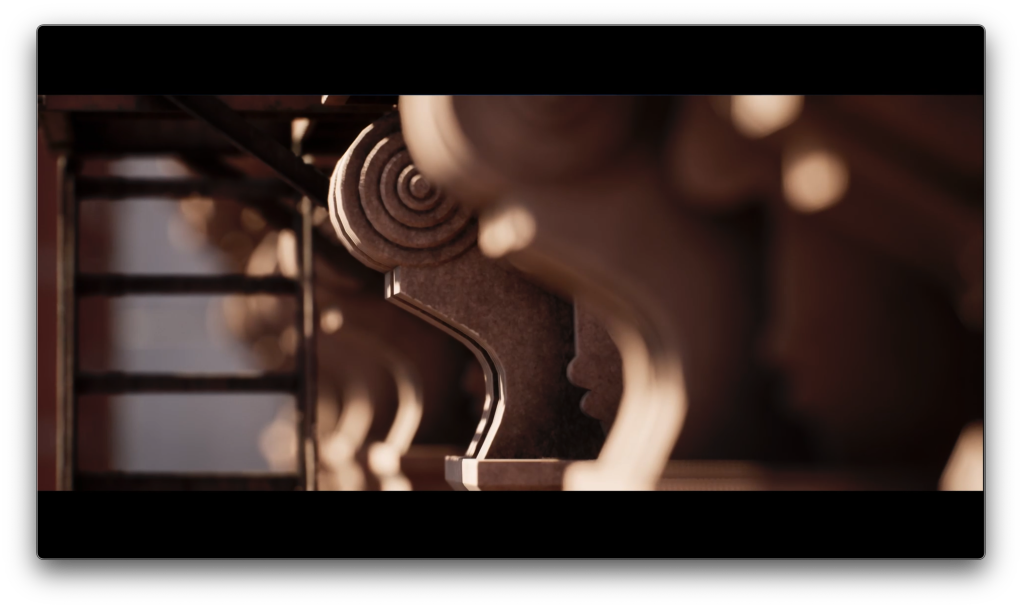
Watch the full five-minute video tutorial about lenses:
